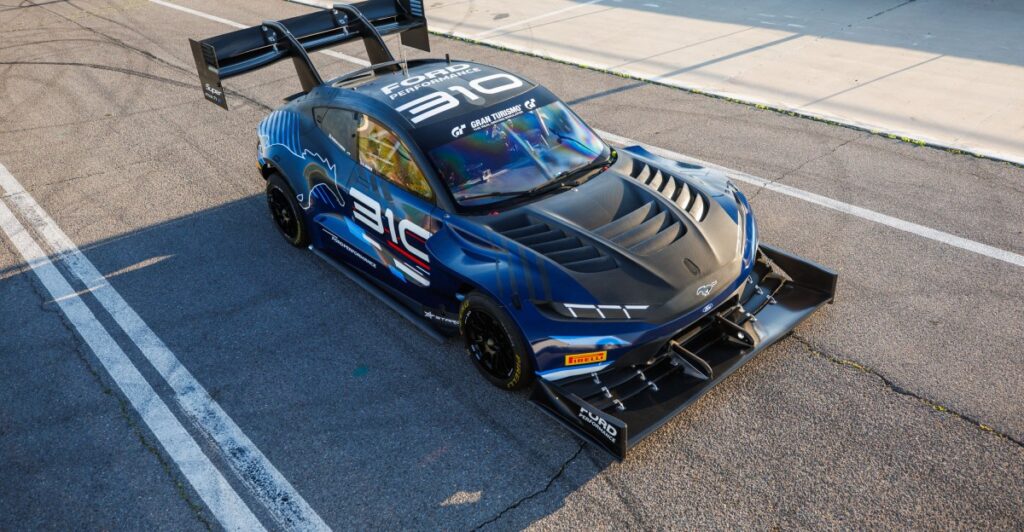
The Pikes Peak International Hill Climb is a racing event that’s been going on since 1916. It’s a 12.42-mile run that climbs 4,720 feet and serves as a proving ground for carmakers to test the speed and agility of their new vehicles.
Electric cars tend to do well in the Pikes Peak race; they don’t have to deal with the problems of high altitudes and thinner air that can stymie racecars powered by fossil fuels, making it an ideal testing ground. The first electric car to win was in 2015, when Honda claimed victory with an electric CR-Z. Volkswagen’s ID R set a course record in 2018, blasting up the course at over 90 mph in just under eight minutes.
But for the past two years, one company has claimed the title of King of the Mountain with its wildly designed electric demonstrators: Ford. The engineers at the automaker’s racing division approach the race with the zeal of a mad scientist. First there was the SuperVan 4.2, a 2,000 horsepower (not a typo) “lightly modified” Transit van with a rear wing so enormous it looked like it could simply fly to the top of the infamous hill. Then there was the F-150 Lightning SuperTruck, a beastly version of the automaker’s electric pickup that, like the SuperVan, took home the top prize — even after briefly coming to a complete stop during its run.
For the past two years, one company has claimed the title of King of the Mountain with its wildly designed electric demonstrators: Ford
This year, Ford is switching things up with the Super Mustang Mach-E, an EV demonstrator with specs similar to the SuperVan and SuperTruck, with some key differences. Still, the Super Mustang Mach-E will have the same challenge: get to the top of the hill faster than anyone else.
And while SuperTruck was an evolution of SuperVan, the Super Mustang Mach-E is more of a “ground-up exercise,” said Zach Burns, F1 and EV demonstration program engineer, in an interview. That includes a new suspension, a full aerodynamic redesign, carbon brakes, and other additions designed to help the demonstrator charge up the notorious hill as fast as possible.
Much of that will come down to downforce, and Ford Performance has really outdone itself with this one. Perhaps you’ve noticed the enormous rear wing that’s reminiscent of a more traditional racecar design with endplates over the curved, body-joining structure. This will help the Mustang Mach-E generate a staggering 6,900 pounds of downforce at 150 mph, surpassing even last year’s SuperTruck high-downforce configuration.
“You’re only going to see that kind of level [of downforce in] F1 and LMP1 [vehicles] back in the day,” Burns said. “So it’s a very high downforce vehicle.”
The Super Mustang Mach-E is more of a “ground-up exercise”
Design work began last September, Burns said. By the end of October, the Ford Performance team had “fully committed” to the design of the vehicle. And final assembly took place about a month and a half ago in Austria by STARD Advanced Research and Development, Ford’s manufacturing partner in the project.
The team started with a point-mass model, cycling through “hundreds and hundreds” of iterations until they settled on the form factor that would be most competitive on the track, Burns said. “So you’re looking at wheelbase track, width, lengths, weights, power, downforce — just kind of all the different spectrums of a vehicle and to settle on the attributes you’d want to have,” he added.
Crucially, the Super Mustang Mach-E is a lighter and more nimble racer than its predecessors, with more regenerative ability and a more balanced weight distribution. This will help with the 12.42-mile course’s twisty ascent, Ford says.
At the heart of the Super Mustang Mach-E are three STARD UHP 6-Phase motors producing over 1,400 horsepower, all fed by 50kWh of ultra-high-performance Li-polymer nickel-manganese-cobalt pouch cells. Like last year’s entry, the demonstrator operates on a voltage of 799V, but this year’s setup sheds critical weight — over 260 pounds — while delivering regenerative braking of 710kW. The car’s carbon braking system, forged magnesium wheels, and Pirelli P-Zero tires are engineered to withstand the punishing 156 turns up to the 14,115-foot summit.
At the heart of the Super Mustang Mach-E are three STARD UHP 6-Phase motors producing over 1,400 horsepower
Ford is eyeing a potential hat trick (or would it be a Triple Crown?) with this year’s race, which takes place June 22nd in Colorado. As with Ford’s previous Pikes Peak entrants, French racing impresario Romain Dumas will pilot the Mach-E to the summit. To mark Dumas’ milestone with the team, the Mustang Mach-E will carry the official race number 310 — a nod to his third entry with Ford Performance and tenth overall run up Pikes Peak.
But this is not some vanity project for Ford. Key learnings from the Super Mustang Mach-E and its counterparts are “actively influencing” the next generation of Ford EVs for production, the company says. This includes innovations in battery chemistry, thermal management, and high-performance electric drive units “tested under extreme stress at Pikes Peak.”
“These vehicles are the upper echelon of the peak of what you can see and what we do here,” Burns said. “I think that definitely helps validate and improve what we do on the production side.”
